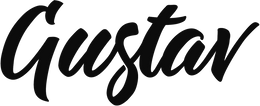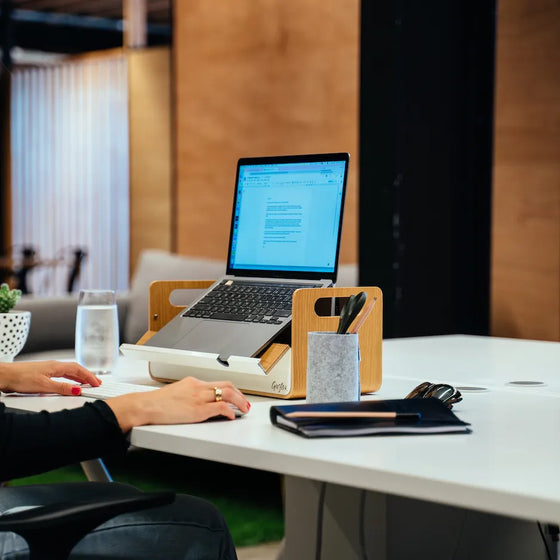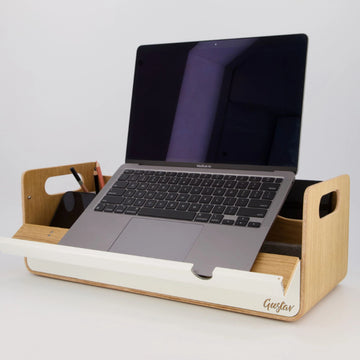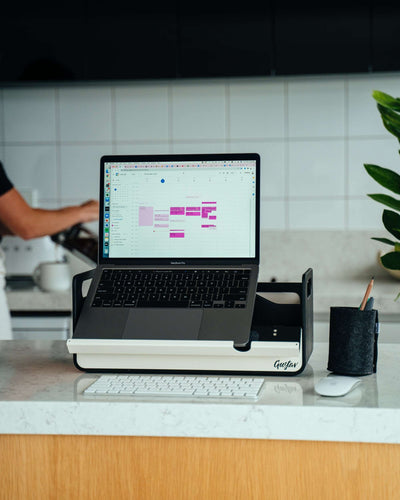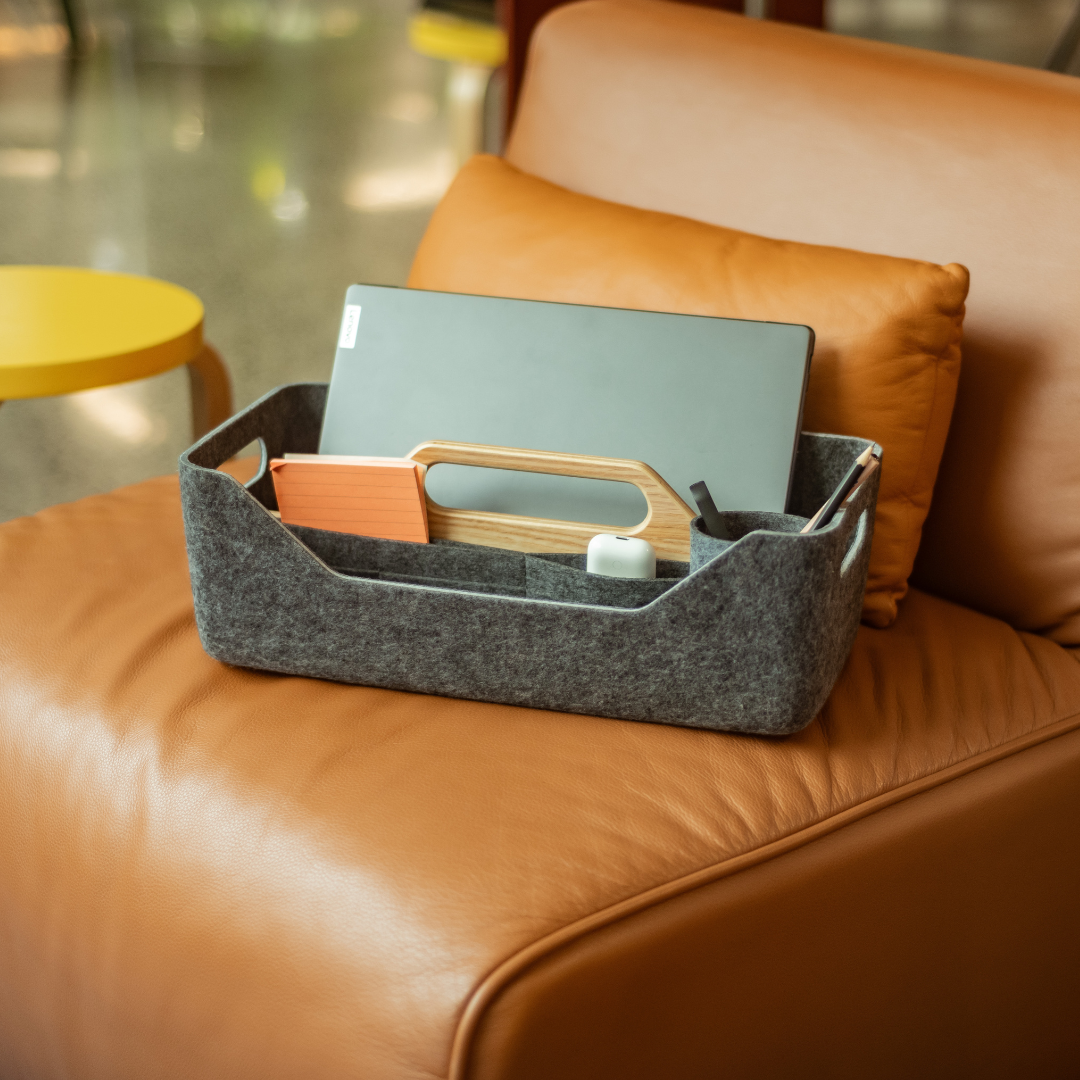New Work - a trend or the new norm?

A megatrend, known as ‘New Work’ is sweeping the world of work, heralding the dawn of a new age in the workplace. This blog will outline what is behind this concept and how it can be implemented in practice.
Definition: New Work according to Frithjof Bergmann
The social philosopher Frithjof Bergmann coined the term ‘New Work’, as a way to discuss the fundamental change currently taking place in the world of work. In a nutshell, the idea is about no longer seeing work simply as a means to an end, but focusing on employees and their needs.
This includes a greater emphasis placed on the meaningfulness of the work, as well as bringing personal flexibility, development of potential, more freedom, agile working and a good work-life balance to the foreground.
New Work: The need for new work models
Even before Covid, a lot was changing in the world of work. Due to the increase in technological possibilities, digitization and the changing needs of employees, many changes had already taken place.
However, the pandemic served to accelerate this change; home offices suddenly shifted from a nice to have niche to being the number one topic in many companies (alongside of course the safety measures to help control the virus).
Suddenly, things were possible that most of us hadn't even seen before: working from home, online meetings, hybrid working and much more. As a result, many companies are now thinking about how the workplace of the future can be designed in the best possible way. This requires new working models that allow more room for flexibility and quick adaptation to changes. And this is exactly where the idea of ‘New Work’ comes in.
New Work: How does the megatrend work?
According to Frithjof Bergmann, New Work does not represent a specific work model, but is rather an umbrella term for the structural change in the world of work which offers space for people-centered, future-oriented approaches. There is no ready-made recipe to proceed with – all that is needed is an open mindset and the courage to change.
The point is to question which structures, models and approaches have had their day and where it is time for more modern approaches. A structural change is taking place in the world of work at large, and this has to be taken into account. Success factors for New Work are a new mindset that alllows a company to remain fit for the future, modern working methods, a corresponding leadership style and a productive form of cooperation.

New work in the company: This is what practice looks like
In practice, the New Work concept can be implemented in different ways in a company. Here are 5 concepts that can bring about the necessary change in the way a company works:
More flexibility in day-to-day work
We are all changing. This affects people as well as companies or the general conditions under which we operate in the world of work. Change management has been a central term in management circles for decades - and with good reason: those who want to succeed in today's constantly changing world have to be flexible, and constantly adapt to new circumstances.
Employees are also changing: for many, the goal of making a career is no longer as much in the foreground as, for example, a good work-life balance. This makes more flexible working hours necessary, but also more freedom to organize the work for oneself.
In this context, so-called ‘trust work’ plays an important role. This is less about the time an employee is present in the company and more about the completion of agreed tasks.
Democratic leadership culture
Top-down management is a thing of the past; the future of leadership lies in more democratic approaches. In concrete terms, this means that employees are involved in decision-making processes and given the opportunity for feedback.
This represents a move away from ‘rule-of-law' and ‘line of sight’ leadership styles, to a business model where employees are encouraged to get involved. The reason for this is clear: anyone who feels like a valuable member of the company shows more commitment, is more productive and approaches their work with more motivation.
Agile working methods
Rigid hierarchies are obsolete. Anyone who wants to react quickly and flexibly to changes and achieve better results primarily relies on good cooperation, short decision-making channels and the ability to act quickly, as well as a continuous feedback culture.
In agile working the focus is on a dynamic work environment: instead of waiting for orders from above, the focus is more on the skills of the employees to act independently and to organize themselves. Continuous improvement of processes and the courage to change when framework conditions change are just as important as the focus on the needs of customers.
Mixed teams
Mixed teams are defined as the cooperation between permanent employees and external freelancers. This brings many advantages for productivity, the exchange of knowledge and results. While permanent employees know the company structures and customer requirements as well as the goals and values of the company, freelancers can bring a breath of fresh air and creativity to a company.
By using a mixed team, a company can deliver innovative ideas, think outside-the-box and question established structures and procedures. In this way, the company can benefit from both components and optimize their outputs.

A Modern workplace
If the coronavirus crisis and all its lockdowns has shown us one thing, it is that in many professions the place of work is less important than previously assumed. Those who do not work in retail, gastronomy
or the hotel industry, or in so-called body-friendly services are relatively flexible in their choice of work location.
Since the start of the pandemic, working from home has been on everyone's lips; many were initially thrown into the deep end, but by and large, employees quickly adjusted. So much so, in fact, that for some it has become almost inconceivable to return to a regular working day five days a week in the office.
New Work also means designing the workplace in a modern way, be it at home in the home office, through mobile or hybrid work, or through redesigning the workspaces in order to take employees’ new expectations into account. A company in which many employees work from home can rethink the design and purpose of the office space: do we really still need individual desks? Or would it be more important to create more space for meeting rooms and team areas and to establish co-working spaces?
Lockers for storing personal items and a portable office toolbox like Gustav can ensure that every employee has the most important work utensils at hand and can set up their workstation individually in seconds.
Conclusion: New work is much more than efficiency and profit
All these concepts, innovations, new ways of working and future-oriented approaches make it clear: New Work is not just about making a company more profitable and efficient. Rather, New Work focuses on employees, responding to their needs and creating effective, motivated teams through flexible work design and democratic management structures.
The necessary freedom to develop employees’ potential, to adapt working conditions to their needs and to design them flexibly is a central factor. Those who see meaning in their work can actively contribute; those who see eye to eye with the management team usually show more effort. And that is the future towards which our working world is heading.
